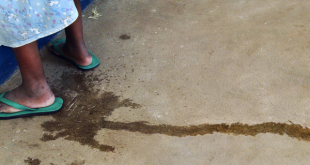Friday, 30 September 2022

By Augustine Olule-Moroto
Uganda Revenue Authority [URA} has donated food items worth 41million and cloth worth 150million to the most vulnerable families in Rupa Sub County in Moroto district.
Speaking during the distribution of the food relief and clothes to 1000 households held at Rupa Sub County head quarters, Ibrahim K Bbossa the Assistant commissioner Public and Corporate affairs says the 41million used for buying food items that includes 10 tones of posho, 5 tones of beans and 2.5 tons of rice was contributed by the staff members of URA after seeing various articles appearing on media showing how the people of Karamoja are starving and reportedly dying of hunger while the clothes was given by the management of URA.
Betty Lotiang a resident of Loreng village, Rupa parish Rupa Sub County one of the beneficiary who got 10kgs of posho, 5kgs of beans 2kgs of rice together with clothes thanked URA for the support saying her children who went to bed without food yesterday after she failed to sell her stones to get money for buying for her family.
Lotiang added that with the little food support she has got, this will help her save the money she was suppose to use for buying food other home responsibilities.
Sammuel Akori another beneficiary from Acholi in village, Rupa Parish in Rupa Sub County while receiving food items and clothes said for the last two days he has been surviving with only water due to lack of food.
However, Regina Teko the vice chairperson of Nagis village in Rupa Sub County warned the beneficiaries not to sell the food or the clothes that they have received but rather eat it at home. According to Teko, anyone who is found selling the food or clothes will lose everything to another person.
According to latest updates reported by district officials to the World Food Programme, the total number of fatalities in 2022 caused by the current food insecurity crisis in Karamoja is 2,465. Most of the fatalities were children and elderly.

The last Acute Food Insecurity IPC revealed that approximately 518,000 people are in urgent need of food assistance in Karamoja, with almost 428,000 individuals facing crisis levels of food insecurity (IPC3) and almost 90,000 in emergency levels (IPC4) in the period between March and July 2022. Also, 91,600 children and 9,500 pregnant women are projected to be acutely malnourished for the period February 2022-January 2023.
The raise of the prices and availability of food, the intensity of climate shocks, the indirect effects of preventive measures to minimize COVID-19 spread, burden of malnutrition, and the increase of insecurity and its associated protection risks are the main triggering factors, on top of large-scale structural and chronic vulnerabilities.
After decades of steady decline, the number of people who suffer from hunger – as measured by the prevalence of undernourishment – began to slowly increase again in 2015. Current estimates show that nearly 690 million people are hungry, or 8.9 percent of the world population – up by 10 million people in one year and by nearly 60 million in five years.
The world is not on track to achieve Sustainable Development Goal 2, Zero Hunger by 2030. If recent trends continue, the number of people affected by hunger would surpass 840 million by 2030.
According to the World Food Programme, 135 million suffer from acute hunger largely due to man-made conflicts, climate change and economic downturns. The COVID-19 pandemic could now double that number, putting an additional 130 million people at risk of suffering acute hunger by the end of 2020.
With more than a quarter of a billion people potentially at the brink of starvation, swift action needs to be taken to provide food and humanitarian relief to the most at-risk regions.
At the same time, a profound change of the global food and agriculture system is needed if we are to nourish the more than 690 million people who are hungry today – and the additional 2 billion people the world will have by 2050. Increasing agricultural productivity and sustainable food production are crucial to help alleviate the perils of hunger.



